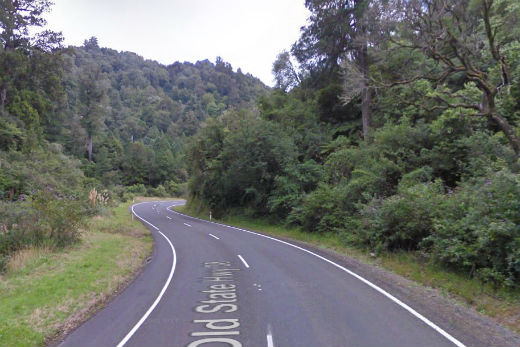A $100,000 dinosaur hunt is about to start within the central North Island's Te Urewera in association with GNS Science and Ngai Tuhoe.
The project, with input from Victoria University of Wellington, involves searching for dinosaur and other prehistoric fossils within Te Urewera.
On the hunt for dinosaur bones in the Ureweras. Image, Google maps.
During the two-year project, the three organisations will pursue a greater depth of knowledge of Earth science in Te Urewera, which is now managed by Tuhoe.
The former national park is known to contain the same fossil-bearing rock that has yielded dinosaur fossils from nearby areas in the past.
Geologists and paleontologists from GNS Science believe there are more such fossils to be found within Te Urewera.
Tûhoe – Te Uru Taumatua say they look forward to the creative and exploratory opportunities that the project is likely to provide for their young people and communities.
The dinosaur hunt is one of three projects receiving funding from the Government's Vision Matauranga Capability Fund, which invests in programmes that help iwi development for the benefit of New Zealand.
In another successful project, GNS Science will work with Ngati Porou, Ngai Tamanuhiri, and the Gisborne District Council to raise iwi awareness of, and resilience to, natural hazards within their rohe on the North Island's East Coast.
The project will take place in three phases. The first step will be a compilation of matauranga Maori and scientific knowledge about natural hazards on the East Coast.
The second phase will see a team from GNS Science, Ngati Porou, and Ngai Tâmanuhiri visit Indonesia to share indigenous knowledge and experiences of natural hazards.
In the third phase, knowledge gained from the earlier compilation and the Indonesian visit will be shared at iwi level through a series of hui, workshops, school teaching modules, and media engagement.
GNZ Science project co-leader Mike Page says the purpose of the Indonesian visit is to heighten iwi awareness of natural hazards and their impact in a cultural context.
'This will be achieved through learning about the experiences of highly vulnerable Indonesian communities, focusing on hazards that present-day East Coast communities have yet to experience. This particularly refers to severe earthquakes, tsunamis, and volcanic eruptions.”
Awareness of natural hazards is something Indonesians live with on a daily basis and is incorporated into their music, art, stories, and social fabric, and it would be useful for iwi to experience this first-hand.
'This project will build iwi capacity in natural hazards and enable more informed engagement with the local council on civil defence and hazard planning matters,” says Mike.
The third project focuses on Aotea, a rare rock containing the blue mineral kyanite, found only in South Westland. Aotea is a special treasure that south Westland iwi Kâti Mâhaki have cared for, gathered, traded and gifted for generations.
Aotea is very distinctive in appearance and is potentially of value to science as a tracer of river erosion as it is washed out in river gravels during flood events.
It also has cultural and commercial value to the runanga. However, Kati Mahaki want to understand sustainability of the resource before making any business plans.
Aotea is rarer than Pounamu, although it has a similar origin being formed deep in the Earth's crust. It is treasured for its ornamental value and is carved and worn. It is a softer rock than Pounamu, so has not been used as a traditional tool as Pounamu has.
CNZ Science project leader Simon Cox says the programme would bring together both traditional matauranga Mâori and scientific knowledge to inform wise and sustainable management of Aotea.
'The project will do this through a series wananga, field excursions, and fieldwork hui during the next two years,” says Simon.
By understanding local geology and landscape forming processes, the runanga will build confidence, skills and capacity and understand the opportunities of natural resources and the risks of natural hazards.
'It will also encourage rangatahi (young people) to develop interests in both scientific and traditional knowledge,” says Simon.



2 comments
hunt
Posted on 04-07-2016 08:06 | By dumbkof2
how much is this nonsense costing the taxpayer
Now
Posted on 04-07-2016 08:35 | By Capt_Kaveman
iwi awareness on Indonesia on how to live without govt handouts but still to teach the young how to live off the land but not to destroy it, the main hazard here is the East coast which is open to the kermadec fault
Leave a Comment
You must be logged in to make a comment.